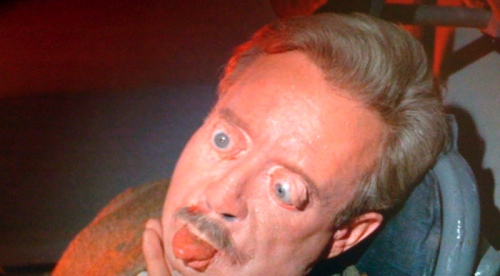
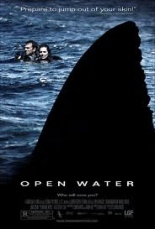 Stressed out? Watching Open Water will not help. Hyped as Jaws meets The Blair Witch Project, the micro-budget, shot-on-video shark flick sports a unique concept in that most of it takes place in one location: the middle of the ocean.
Stressed out? Watching Open Water will not help. Hyped as Jaws meets The Blair Witch Project, the micro-budget, shot-on-video shark flick sports a unique concept in that most of it takes place in one location: the middle of the ocean.
Cute couple Blanchard Ryan and Daniel Travis seek an escape from their hectic lives by taking an impromptu vacation, part of which entails scuba diving in the deep blue sea. But when their boat miscalculates the head count and leaves for shore without them, the two quickly realize their trip is on a fast-track toward hell. With nothing but horizon surrounding them, the duo tries to cling to the hope that they will be rescued before they dehydrate or, worse, turn into chum.
 I wasn’t sure if the movie was going to work, because Ryan and Travis didn’t seem like they were doing acting. Then I realized that’s the point: This is shot in a quasi-documentary style, with fly-on-the-wall glimpses into this couple’s ordinary life. It’s supposed to feel real, rather than theatrical, and does.
I wasn’t sure if the movie was going to work, because Ryan and Travis didn’t seem like they were doing acting. Then I realized that’s the point: This is shot in a quasi-documentary style, with fly-on-the-wall glimpses into this couple’s ordinary life. It’s supposed to feel real, rather than theatrical, and does.
But how can watching two people bobbing in the water for an hour not get boring? Their conversations are just compelling enough in an oh-shit-now-what fashion to keep your attention, and you never know when a shark is going to pop up (mostly because the stars were surrounded by real ones, who don’t take direction).
I wouldn’t say Open Water is harrowing, but toward the end, it’s tense and nerve-racking, especially in a late-night scene in which the screen is completely black, and you only catch glimpses of what’s going on when lightning flashes. Once more, it’s what you don’t see that can frighten you the most. Expect a riveting action film and you’ll be disappointed; expect a low-key character study and you won’t. —Rod Lott


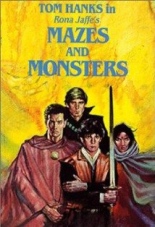
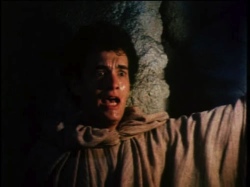 In this early Tom Hanks vehicle, the threat to humanity is LARPing (or live-action role playing for those of you who have robust social lives or haven’t seen
In this early Tom Hanks vehicle, the threat to humanity is LARPing (or live-action role playing for those of you who have robust social lives or haven’t seen 
 Remember in the days after 9/11 when media reports and overly sensitive people asked/moaned, “Will we ever be able to laugh again?” Well, of course, you dumb shits. And not to downplay the horrible, horrible, horrible tragedy of Sept. 11, 2001, but with nearly a decade past, not only are we still laughing, but we’ve grown to the point of having an actual terrorist comedy, in the uproarious
Remember in the days after 9/11 when media reports and overly sensitive people asked/moaned, “Will we ever be able to laugh again?” Well, of course, you dumb shits. And not to downplay the horrible, horrible, horrible tragedy of Sept. 11, 2001, but with nearly a decade past, not only are we still laughing, but we’ve grown to the point of having an actual terrorist comedy, in the uproarious 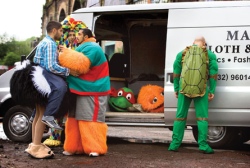 Director/co-writer Chris Morris’ film has the feel of a documentary, and reminds one of last year’s similarly scoped and structured
Director/co-writer Chris Morris’ film has the feel of a documentary, and reminds one of last year’s similarly scoped and structured 
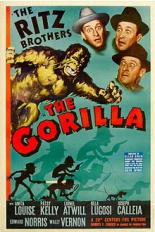
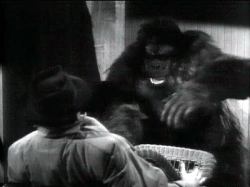 The Ritz Brothers are like a combination of The Marx Brothers, Abbott & Costello and … oh, I dunno, Sammy Petrillo and Duke Mitchell, just to even things out a bit. (Typical exchange: “How do you spell ‘gorilla’? Two Rs or two Ls?” “Gorilla. G-O … Gee! Oh! Gorilla!”)
The Ritz Brothers are like a combination of The Marx Brothers, Abbott & Costello and … oh, I dunno, Sammy Petrillo and Duke Mitchell, just to even things out a bit. (Typical exchange: “How do you spell ‘gorilla’? Two Rs or two Ls?” “Gorilla. G-O … Gee! Oh! Gorilla!”) 